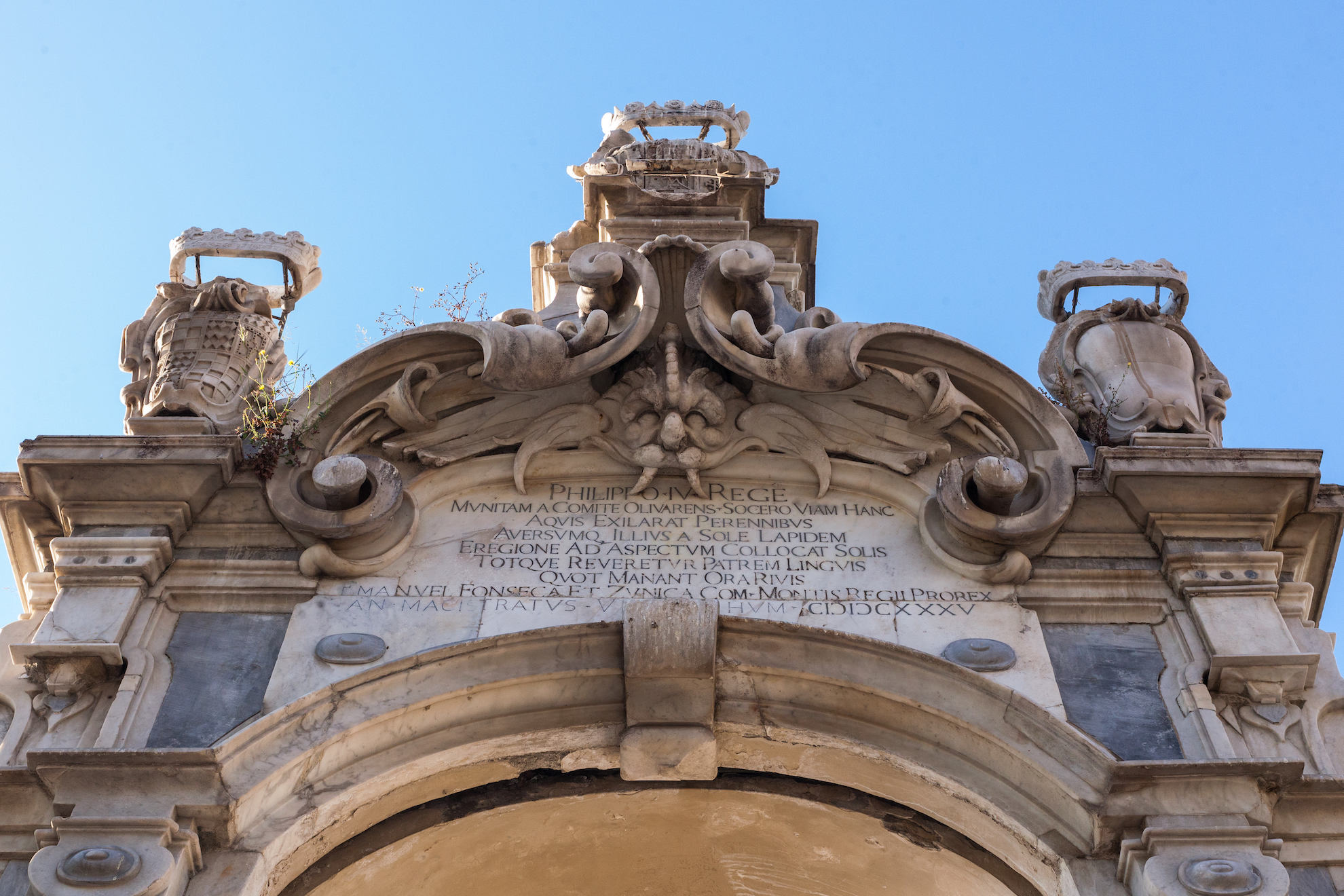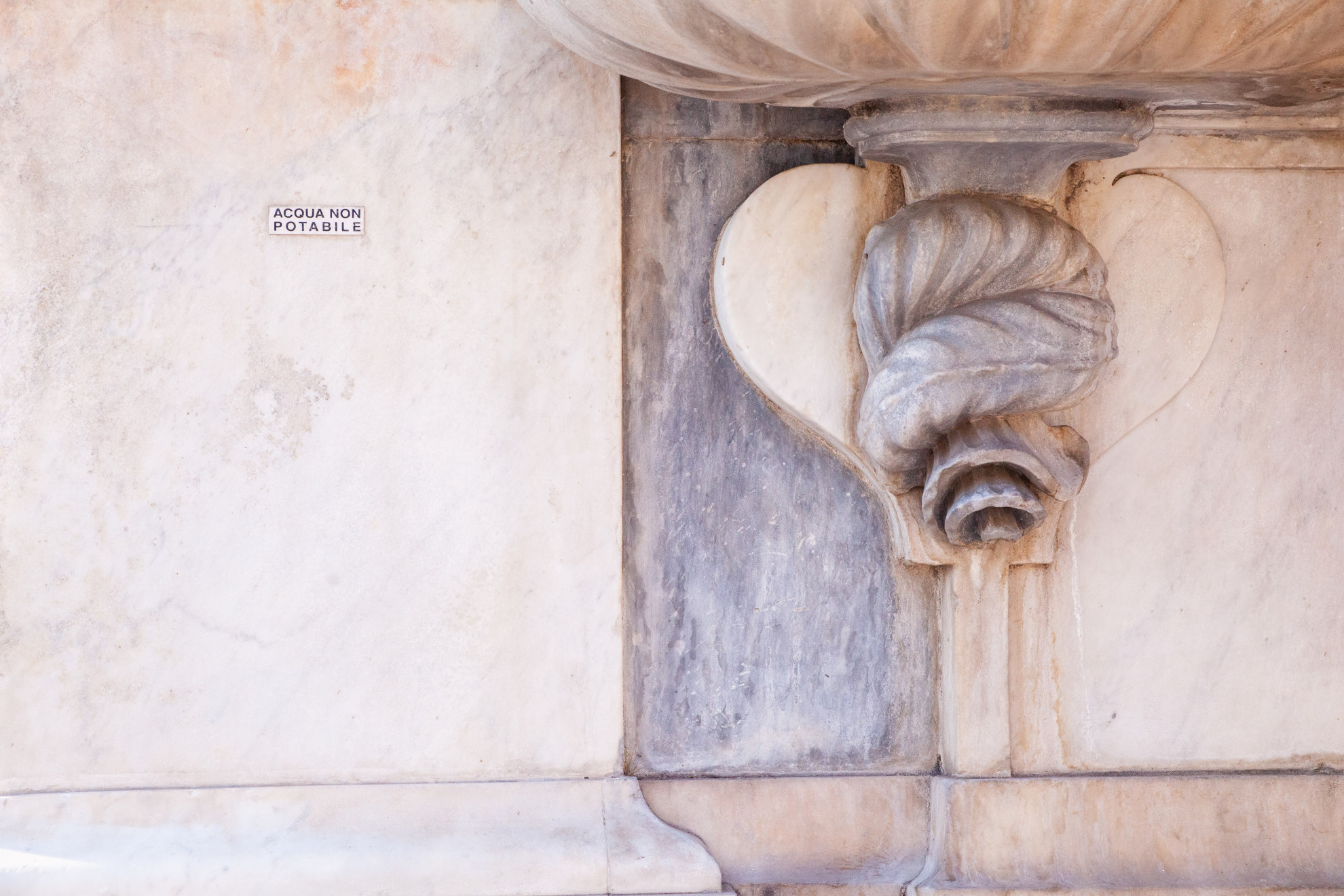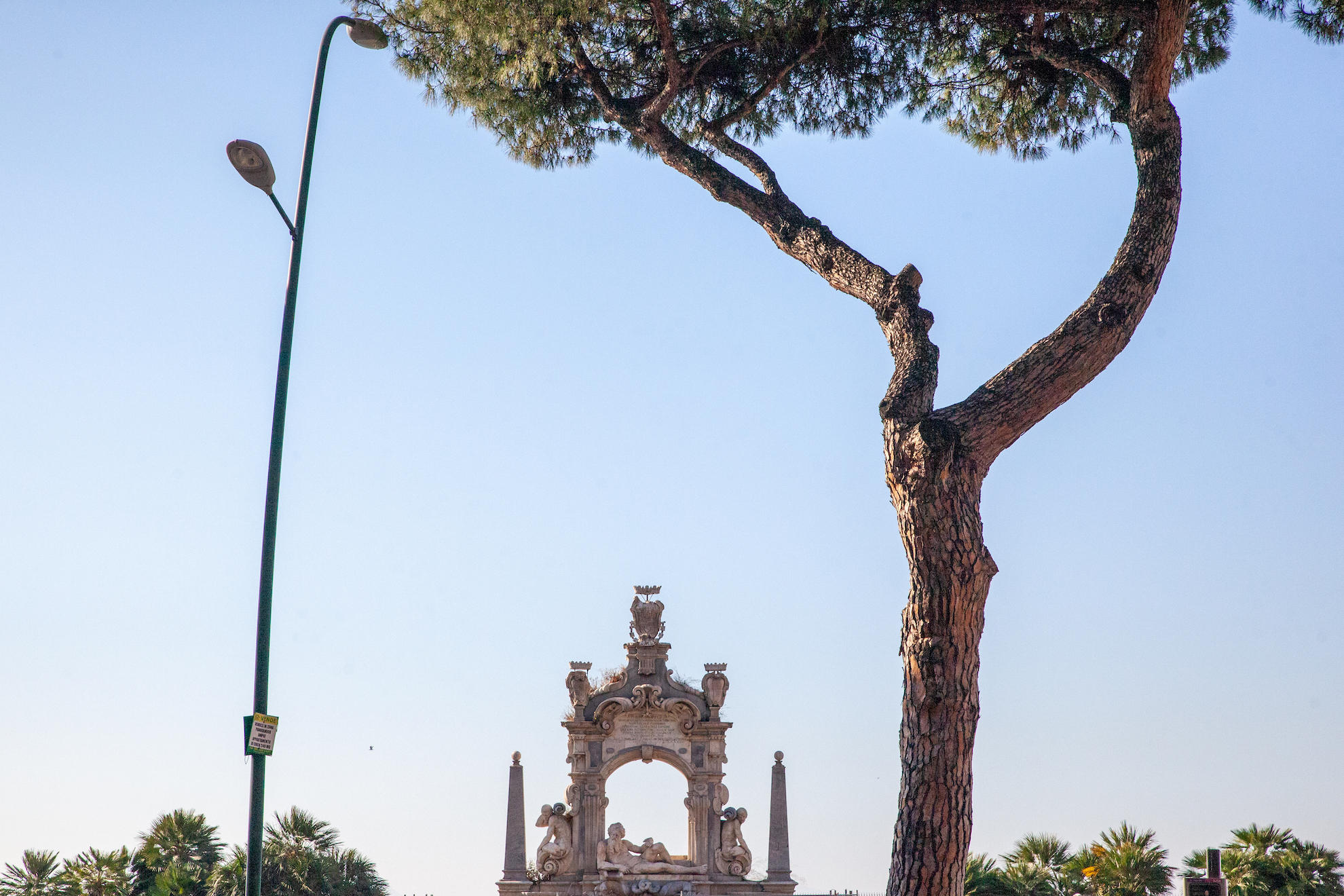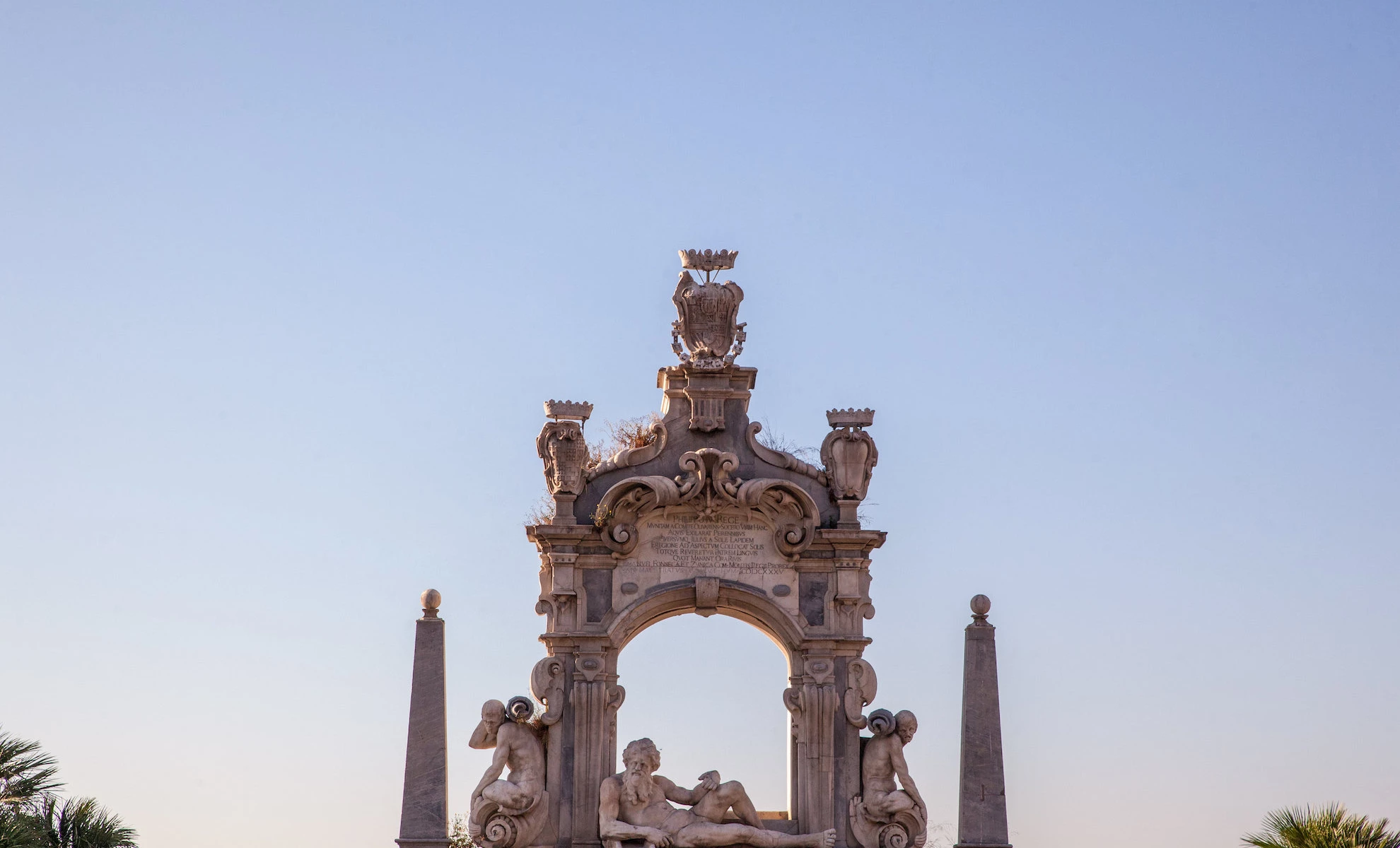It was born from the slopes of Monte Somma, next to Vesuvius. On its way it winded through the land of ancient Campania Felix, today corresponding to the cities of Volla, Casalnuovo, Casoria.
Ph. Alessandra Mustilli

Arriving in Naples, it split into two sections: one reached the current Pizzofalcone hill; the other stopped on the banks where today the port extends, in the area called Ponte della Maddalena, at the gates of the city. Among the people who lived in the old Neapolis, under the Greeks first and the Romans afterwards, everyone knew this river called Sebeto, symbol of fertility and vitality for the whole plain of Campania.
At the end of the late Middle Ages, with the urban development of Naples, the Sebeto became little more than a rivulet, until it completely disappeared from view, to survive in the collective memory of the city. In the viceregal period, in 1635, this memory was renewed by the monumental fountain commissioned by the Viceroy Emanuele Zuniga y Fonseca to the sculptor and architect Cosimo Fanzago and his son Carlo.
The allegory of Sebeto | Ph. Alessandra Mustilli

The Fontana del Sebeto, until 1899 part of the panorama from Piazza Plebiscito to the sea, nowadays adorns Largo Sermoneta, on the border between Mergellina and Posillipo. Its profile redesigns that of the Gulf, between the figure of Vesuvius in the background and the voices of the fishermen who still weave together the fishing pots and bring the boats ashore. Here, Naples finds its dimension as a seaside city, as it was in the original core of the "old city" at the foot of Monte Echia and a stone's throw from Castel dell’Ovo, on the other end of the promenade. Walking towards the fountain, you can hear the sound of the undertow.
The lowered arch frames the extreme offshoot of the Sorrento Peninsula towards Punta Campanella. All around, the boats float to the rhythm of the waves. We are in a usually busy area, a few meters from the seafront chalets. But very few steps towards the sea are enough to enter a new dimension, of thought and gaze.
Ph. Alessandra Mustilli

The Sebeto is represented in the classic iconography of rivers as an old man with a long beard, resting on a base of piperno (a stone of volcanic origin widely used in Campania), while holding up three marble tanks, holding the water that flows from the figures of the Tritons on the sides. A tribute to Neapolitan classical mythology, in this case it is symbol of the power of the Spanish Viceroys. In the 1600s the monumental fountains were in fact an expression of prestige for the most influential families of the time, not only in Naples: just think of Rome, with the Fountain of the Four Rivers or that of the Triton.
The view of the fountain from Mergellina beach | Ph. Alessandra Mustilli

So, leaving Posillipo behind, the gaze opens up towards this rectangle of Gulf that takes off towards Vesuvius, the Lattari Mountains and the island of Capri. The Fontana del Sebeto is there, it breathes salty air and restores the dimension of Naples as a city of water: alive, always on the move, in many ways impetuous, as was the course of the river. On the other hand, Sepeithos, the name of the river in classical times, really means “going with a impetus”.
Ph. Alessandra Mustilli

For this reason, it is not obvious to say that we are in front of a “symbolic” fountain. Beyond the historical and monumental value, the allegorical significance of the whole is such as to contain an identity that Naples has carried with it for more than two thousand years. And which continues along the entire coast line: on one side towards Borgo Marinari and Castel dell’Ovo; on the other, towards Palazzo Donn’Anna and Capo Posillipo.

